In 1960, British and Italian Somaliland were joined, and Somalia officially gained its independence after centuries of foreign rule. The first elections were held in 1964, with the SYL winning an absolute majority. Somali politics began to flourish, with women taking an active role. Taken from an Associated Press article published in 1966, the photo above shows a pristine main street in Mogadishu. The caption describes Somalia as “perhaps the most democratic country on the dark continent.” A free and fair election has not taken place in Somalia since the 1960s. Four decades later, the country is riveted by despair.
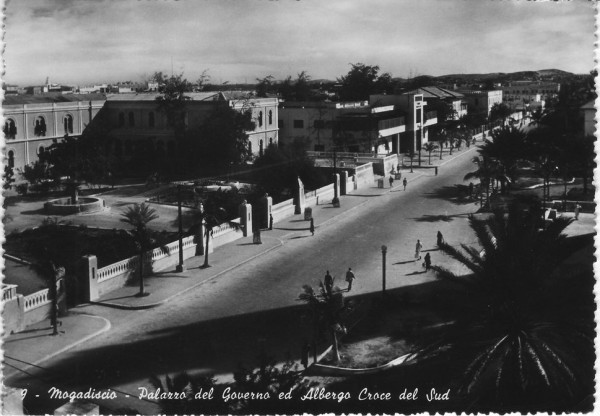
Waa Wadooyinka Magaalada Muqdisho Taariikhdu Markii ay ahayd, 1950, kii.
A scenic view of a quiet Mogadishu street paints a surreal view of life in 1950′s Italian-controlled Somalia.
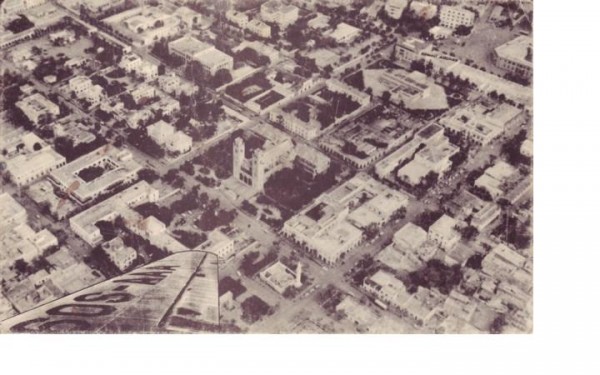
Muuqaalka Garoonka Diyaaradaha Meeshii Somali Airline lagu xarayn jiray 1950, kii, burburtayna 1991.
An aerial view of Mogadishu from a 1950s Somali Airlines postcard (the airline ceased operations in 1991). The cathedral is pictured in the center. Over the years, the cathedral was looted and set afire. But Somalis displaced by conflict now call the ruins of the once great church home. Its doors remain unlocked for squatters who seek shelter inside.
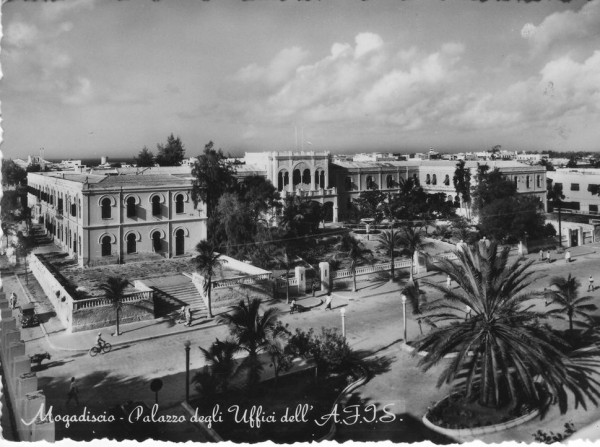
Muuqaalka Wadooyinka Muqdisho 1950, kii, iyo Hoteladii xiligaas ku yaalay, oo Magac Talyaani wata.
This 1950s postcard shows a majestic Mogadishu street shaded by palm trees. The former offices of the Municipality of Mogadishu were housed in the building on the left, and the lavish Croce del Sud Hotel, to its right.
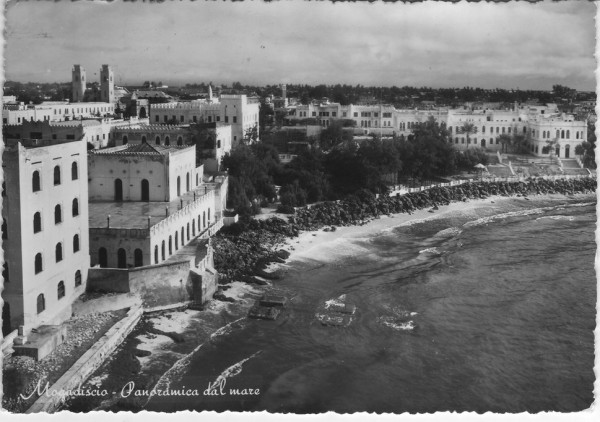
Muuqaalka Xeebta Indian Ocean ee Magaalada Muqdisho 1952,kii
A view of the white city of Mogadishu from the Indian Ocean in 1952. Sydney Oats describes the road into Mogadishu as barren for the first several miles, as the city had been shelled and bombed after the Italians had been driven out. The houses that were still standing were overgrown with grass and weeds. While many European expatriates lived in extravagant Italian-inspired homes, Somalis lived in traditional rectangular houses, often lacking windows..
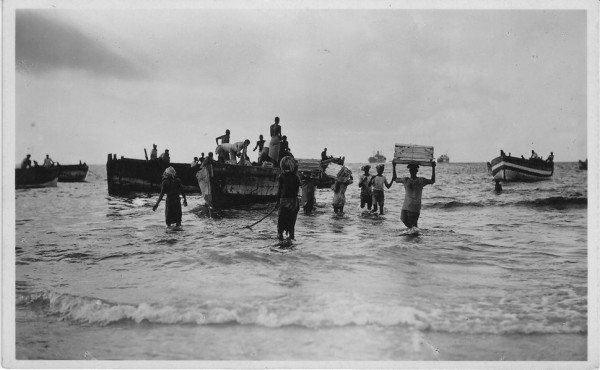
Soomali Moos ka dhoofinaysa Magaalada Muqdisho 1952,kii.
A 1950s photograph shows Somalis packing waiting boats with bananas, one of the country’s main export goods.
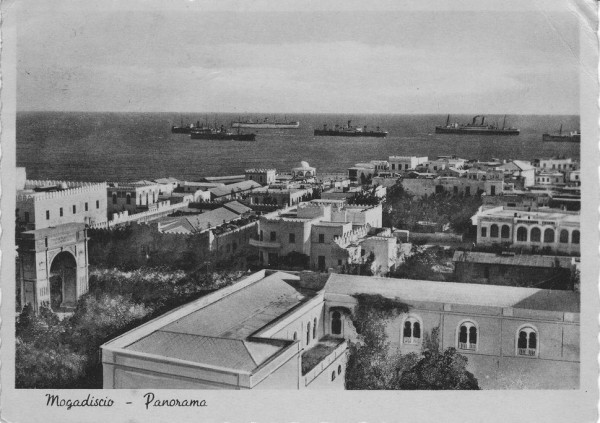
Qaabkii Guryaha loo dhisan jiray oo ahaa Qaabka Gumaystayaashii Talyaaniga!.
A rooftop view of Mogadishu’s Italian-inspired architecture.
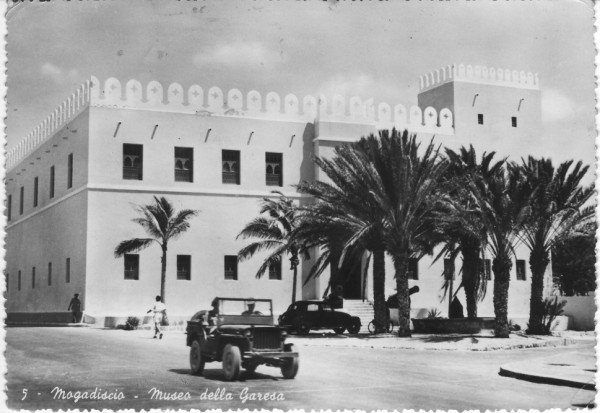
Gurigii la oran jiray Garisa Museum ee Muqdisho ku yaalay 1872, gii, waxaana daganaa Suldanadii Sansibaar la oran jiray, kadibna, Gumaystayaashii Talyaaniga ayaa dagay oo ka dhigay Gurigii Talyaaniga, laakiin ugu dambayntii halgan kadib waxaa laga dhigay Gurigii Umadda.
A postcard sent in 1950 shows the Garesa Museum. Built in 1872 by the Sultan of Zanzibar, it was later established as a museum by the Italians in the 30s, and later, the national museum after Somalia’s independence. The museum suffered looting and damage at the onset of violence in the 1990s and has remained closed for two decades.
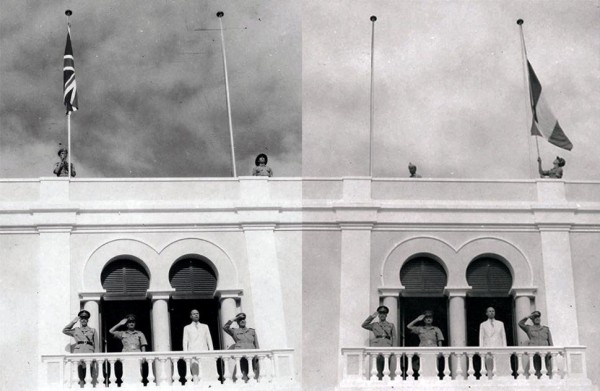
Calanka Ingariiska iyo Talyaaniga inta aan Muqdisho laga taagin, 1948, kii waxaa Wadooyinka Muqdisho daadku mulucyeeyey dhiigga shacabka Muslimka ah ee Soomaliyeed, Adduunyo Taariikh aan Soomali badan ogayn!.
Blood stained the streets of Mogadishu on Jan. 11, 1948 as Somalis protested the possible return of Italian rule to Italian Somaliland, which had been controlled by the British since 1941. One report stated the clash between Italian supporters and the Somali Youth League, Somalia’s first political party, was fueled with “bullets, arrows, broken bottles and knives,” leaving over 50 Italians dead. One year later, as the U.N. General Assembly debated whether to reinstate Italian control, more protests rattled the city. In November of that year, it was decided that Italians would once again hold trusteeship, but only under the pretext that Somalia would gain independence in ten years.
On the left, the British flag is lowered on April 1, 1950, marking the end of British rule. Pictured to the right, the Italian flag is immediately raised. The picture was provided by the military, as Oats and the rest of the Royal Air Force were not allowed to attend the ceremony for their own safety.
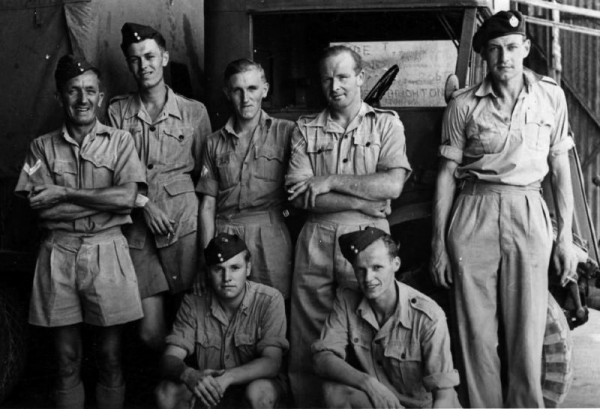
Ciidamadii shisheeye ee shacabkeena xasuuqay oo Muqdisho jooga 1949, gii, Nin raggana waa og yahay doqonna iyo Al-ictisaamna ha u sheegin halganka Umadda Soomaliyeed dhiiggooda u daadiyeen!.
Sydney Oats is pictured on the bottom left in July of 1949. Upon arrival in Mogadishu, he described the city as a “hot and sultry” place. Oats was on the last RAF plane to leave Mogadishu when the mission was closed one year later.
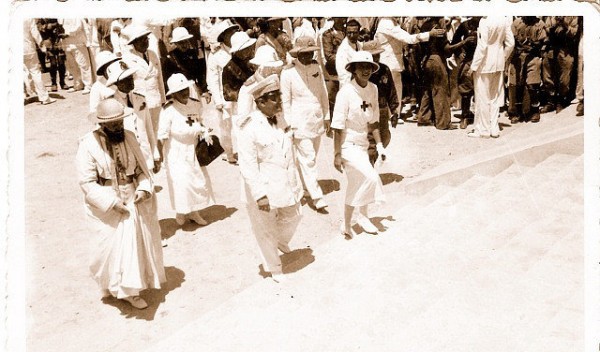
Boqorad katimdi Talyaaniga oo Muqdisho dhex maraysa Bishii March 1936, ayada oo xiran dhar leh calaamada Bisha Cas ama Kiristaana, waxaa dhinac socda Baadariyaal waxay sheeganayaan in ay ku guulaysteen in ay Diinta naga fasahaadiyeen!,.
In March of 1936, the Crown Princess of Italy boarded the hospital ship Cesara. A band played Italy’s national anthem while seaplanes flew above, honoring her departure. As the hospital ship pulled away from its port in Rome, the princess, wearing her Red Cross uniform, is said to have given a Fascist salute to a cheering crowd. On her journey, she worked in military hospitals in Eritrea and Mogadishu. Above, the princess visits a monument in Mogadishu on April 18, 1936.
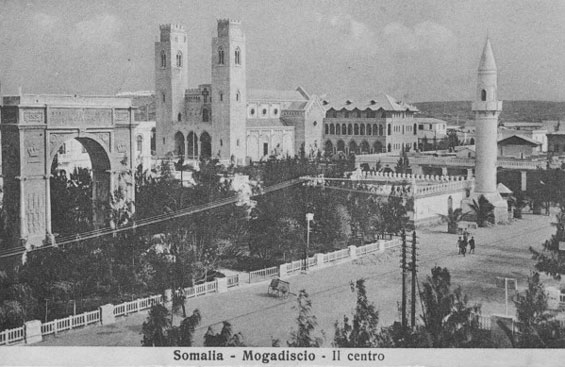
Muuqaalka Faras Magaalaaha Magaalada Muqdisho 1936, Masaajidka Arbaca Rukun ayaa Manaaradiisii Muuqataa!, xiligaas waxaa joogay Culimo Rabaaniyiina oo Gumaysiga hala iska dhiciya yiraahda!, Masaajidkas wuxuu ku jiraa Masaajida Afaraat ee Adduunka ugu caansan, lana dhisay Sanadkii 1269, gii. Waana xiligii Sheekh Qoraagii Carbeed ee Ibnu Baduula uu Soomaliya tagay gaar ahaan Muqdisho!, sidoo kale meel aan saas oga fogayn Talyaanigu waxay ka dhiseen Kaniisad si ay shacabkeena Soomaliyeed u gaalaysiiyaan laakiin ma dhicin taas Allah waa diiday!, waxaana Allah shacabka Soomaliyeed ku bad baadiyey Culimo Rabaaniyiina oo xaqqa caddeeyey ogna dhagarta gaalada iyo waxa ay rabaan in aan noqono! Allow Al-ictisaam iyo Taageerayaashooda si kasta wax ma ugu sheegnay!.
Above, a picturesque downtown Mogadishu around 1936. Pictured on the right is Arba Rukun mosque, known as the Mosque of the Four Pillars. Built in 1269 AD, the mosque predates Ibn Battuta’s historic arrival in Somalia. The Italian-built Catholic cathedral, which now lies in ruins, sits in the center, and the Triumphal Arch, honoring Italian King Emmanuel III, on the left.
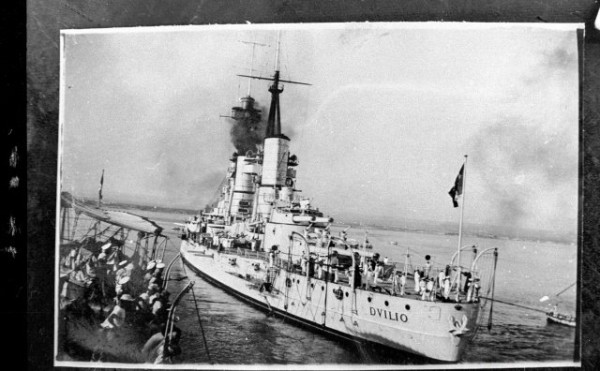
Talyaaniga oo xiligaas haysta Bariga Afrika sida Itoobiya, Elatareeya, Gobalada Somaliland hadda loo yaqaan 1936, Magaaladu waa Barbara ama waa Takada Saylic!,
Italian Somaliland was integrated into Africa Orientale Italiana, or Italian East Africa, in 1936, along with Ethiopia and Italian Eritrea.
Above, the Italian S.S. Dvilio is pictured off the coast of Somalia, circa 1936.
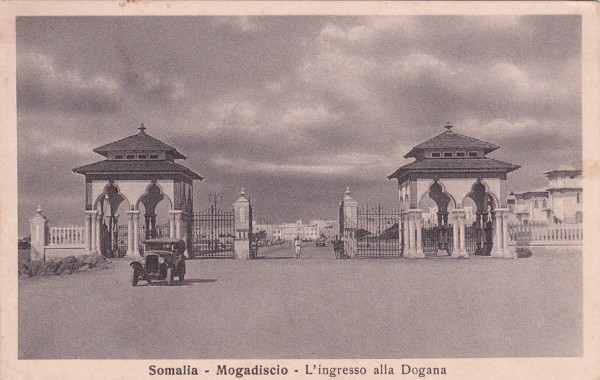
Xuruntii Albaabkii laga soo gali jiray Magaalada Muqdisho iyo Xabsiyadii ay ku cadaabi jireen Gumaystayaashu Shacabka Soomaliyeed ee Muslimiinta ah Taariikhdu markii ay ahayd 1935, kii!.
Dated 1935, this photograph shows the grand port’s entrance gates in Mogadishu.
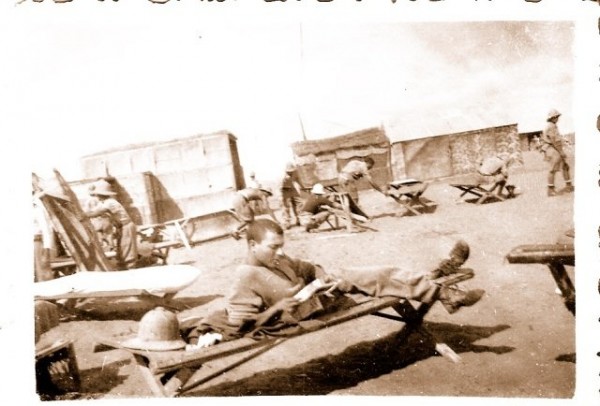
Askar Talyaaniya oo 1930, kii ku raaxaysanaya Barxada Soomaliya, waxayna saldhig ka dhigteen Muqdisho 1935, tii!. Allah ayaa garanaya dhibkay ku hayeen Hooyooyinkeen, Gabdhaheena iyo Aabbayaasheen!.
The 1930s marked an era of prosperity for Somalia. Italians flocked to the newly chic Mogadishu as their empire in the Horn of Africa rapidly expanded. In 1935, the Italians also invaded Ethiopia, taking the capital Addis Ababba the year after.
Here, an Italian soldier relaxes in Somalia, circa 1935.
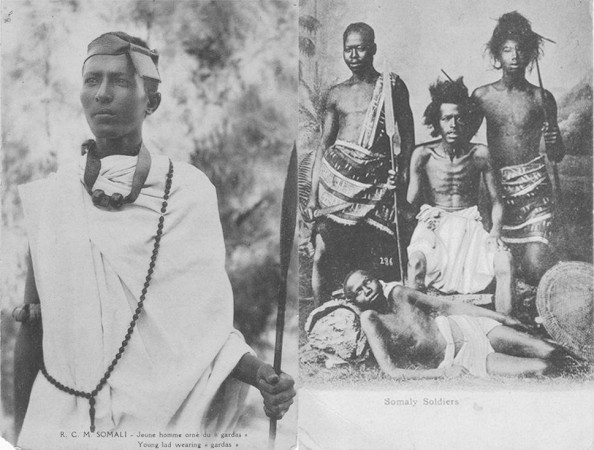
Mujaahid Sheekh Sayid Mohamed Abdullah Hassan Xertiisii iyo wiilashii uu towxiidka baray oo Warmahoodii wata!, Taariikhdu 1905, kii, waxaa Muqdisho ka jirta Saldanadii Sanjibaar loo yaqaanay, Aabbayaasheen oo Waran Wata ayaa Gumaysi Qori wata ka adkaaday, Al-ictisaam u sheega Wiil Qori Haysta in ay xiniiyaha ku dhagan yihiin oo leeyihiin waxba iskama dhicin kartid!.
Starting in the late 1890s, Mohammad Abdullah Hassan rallied the Somali people to fight against European expansion in East Africa. With Hassan’s impassioned battle cry, the Dervish State was created, encompassing northern Somalia. Meanwhile, on the eastern shores, the Sultan of Zanzibar leased the city of Mogadishu to Italy in 1905. Known as Mogadiscio, the city became the capital of Italian Somaliland, which stretched from the Eastern tip of British Somaliland all the way down the coast to Kenya.
To the right, Somali soldiers stand for a portrait photograph, taken in Yemen in the early 1900s. A French postcard shows a young man wearing traditional attire on the left.
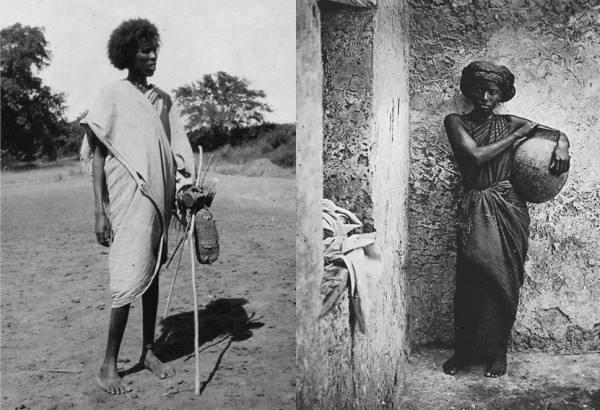
Soomalidii hore Sanadihii, 1880, kii, laga soo gaaro 1900, kii, Gabadha meesha tagaan waa Soomali Baantuu ayey leeyihiin, Wadamada carabta laga keenay oo Soomaliya Talyaaniga jooga laga iibiyey, 1882, dii, waxay noo sheegayaan Asal ahaan Soomali Baantuu in aysan Soomali ahayn, Qarnigii Sagaal Tobnaad ayey ka hadlayaan,
The late 1880s proved disastrous for many African nations, as the European “Scramble for Africa” carved up the continent into 30 separate colonies. By 1900, the European reign stretched across 90 percent of Africa, adding ten million square miles to their sphere of influence.
A Bantu slave woman is pictured on the right, around 1882 in Mogadishu. The Bantu people are not ethnically Somali, as they were captured by Arab slave traders and sold into Somalia throughout the nineteenth century. On the left, a man is dressed in traditional attire, the Italian postcard text on the back reading, Il Nomade.
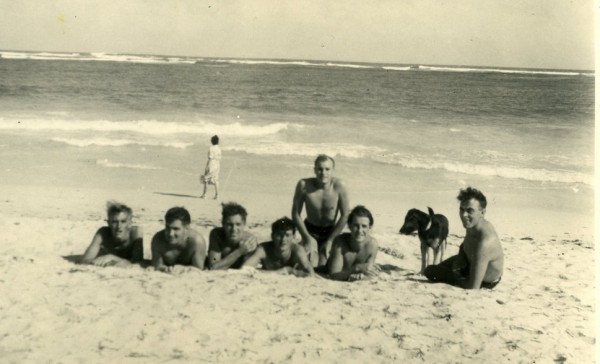
Askar Talyaaniya oo Xeebta Muqdisho ku raaxaysanaysa, 1331, dii, Xiligaas Qoraaga Carbeed ee Ibnu Baduula ayaa tagay Muqdisho, Boqolaal Geela ayey ka dhoofin jireen Dekedda Muqdisho Talyaanigu, Warbixintaan Warbaahinta FP, daabacday ayaa lagu soo aadiyey xili Soomaliya gacan gumaysi galayso waxaana lagu tilmaamay Soomaliya in ay tahay Failed State, wadan aan dowlad lahayn sidii la rabana laga yeeli karo, haddii wadanku 20, Sano dowlad la’aan gaaro, lama kala lahan weeye waa Failed State. Ujeedooyinka loo daabacay warbixintaan ayaa ah shacabka Soomaliyeed in la xasuusiyo gumaysigii ay soo mareen Aabbayaashood, iyo dhiigii ay usoo daadiyeen in ay xor noqdaan!.
Culimadii Al-ictisaam, Aqoonyahanadii maadiga bartay, Dhalinyaradii iyo Waxgaradkii Soomaliyeed, waxaan leenahay wali meel wax laga qabto ayaan joognaa fursadna waan haysanaa! ee aan u istaagno sidii dalka ugu difaaci lahayn, Maal, Caqli, Fatwo diineed, Qoraal iyo hadal, haddii kale waxa la qabsanayo waa dal Soomaliyeed, iyo dad Soomaliyeed , Al shaab kaliyana masuuliyad kama saarnaa Allah Aakhiro waa na weydiinayaa haddii hooyooyinkeen horteena lagu fuulo birri!.
When the great Arab explorer Ibn Battuta landed on Mogadishu’s shores in 1331, he was greeted with a feast fit for a king. Hundreds of camels were slaughtered daily to feed the flourishing port city, where a man could eat for ten. The sultan, clad in silk and fine Jerusalem cloth, was followed by a procession of trumpets and colorful canopies upon which golden birds perched.
How times have changed in Somalia. Today, centuries of European colonization and political strife, coupled with interludes of devastating drought and flooding, have created a failed state that’s become a haven for lawlessness. For years, Somalia was passed between foreign powers: first the Portuguese, then the British, then the French and Italians. Upon its declaration of independence in 1960, the country’s artificially drawn borders proved incapable of anything resembling stability. Now, Somalia remains in a constant state of conflict.
Once known as the “pearl of the Indian Ocean,” tourists flocked by the plane-full until the country descended into civil unrest in the 1990s. Now the only visitors are aid workers and their heavily armed bodyguards. When a Canadian tourist landed in Mogadishu last year, immigration officials thought he was either a spy or insane.
Above, young foreigners enjoy a warm day at Lido Beach. Sydney Oats, a former Royal Air Force (RAF) electrical fitter who was stationed in Mogadishu in 1949, provided this photo, as well as several others. He told Foreign Policy that Lido Beach, with its white beaches and breathtaking view, was the best part of Mogadishu, where young soldiers spent their afternoons nearly every day. Until 1991, when President Siad Barre was overthrown by a coalition of warlords after 22 years in power, Lido Beach was a popular club scene. This week brought news that Somalis are finally returning to the warm waters of the Indian Ocean after years of deserted beaches. But this brief beach-going interlude may be short lived. With pirates patrolling the coastline and the terrorist network al Shabaab arming children with AK-47s, Mogadishu remains arguably the most dangerous city in the world.
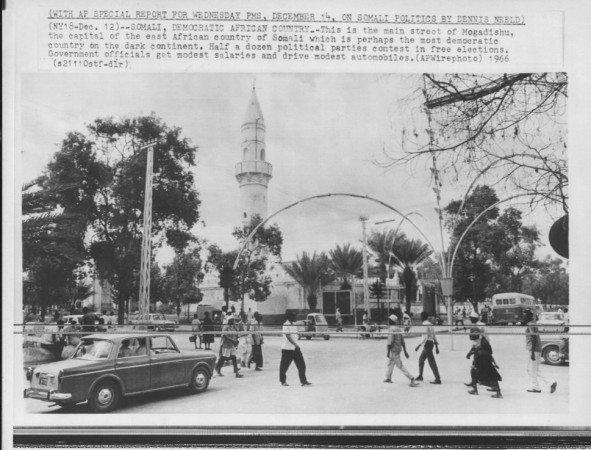
Isha Warka Resource Warbaahinta FP link gaas ka daawo Masawiradana hoo meesha Next ku taalo ka wad,
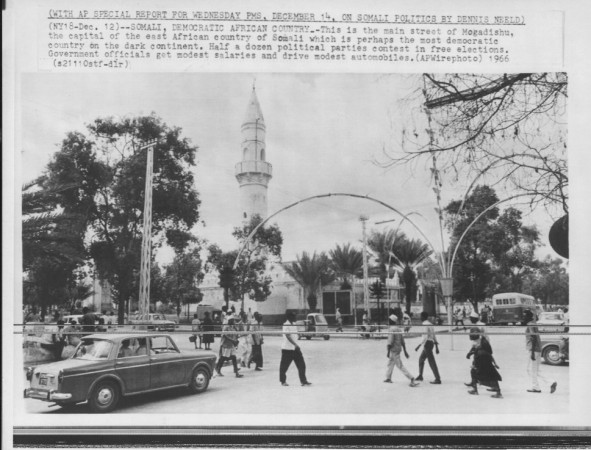

4 comments:
Those photos of Somali warriors are not pictures of any actual Somali dervishes. They're pictures of Afar nomads and perhaps some Bejas. Simply look for images of the Somali Sultans and I can send you a few pictures of them that they had ordered be taken.
The Dervishes were not much loved in Brittain or even Italy. Ask yourself... Would they depict them in a positive light? They called Mohammed Abdullah Hassan the Mad Mullah & a savage yet he managed to fight three empires off for 22 years and erected impressive forts. A savage? I think not. There's even supposed pictures of him that can within a second be proven not to be him as his attire doesn't resemble the attire of his nearby contempraries like many of the Sultans nor does he look anything like any statue of him nor does he dress like what he's clansmen dress like to this day.
There are numerous odd inconsistencies too. You'll see depictions of the Dervishes well covered up, wearing turbans and using rifles as they were confirmed to have utilized and then suddenly you see afro clad spearmen in robes that barely cover them. They were clearly propaganda photos, none of them even depict the dervishes with rifles or the kinds of weapons they were confirmed to have been buying off of their Ottoman allies and why on Earth were the Sultans dressed so different from them? Everybody else in Somali territories wore turbans and very arabized attire and the dervishes were some magical exception? Look for a picture of Kenadid in his Sultan attire, that is probably close to what the Seyyid wore.
Stop using those kinds of pictures, they're clearly not an accurate depiction and what I've noticed about them is that they were never taken in the presence of actual Sultans or Somali leaders. Random colonial soldiers just snapped shots and all the proof we have of their legitimacy is that they simply claim they were Somalis. Google "Afar Nomad" bro... You'll see that they wear what those people are wearing. Somalis don't and if they do only the nomads do not any people in rural settlements, cities or armies.
http://upload.wikimedia.org/wikipedia/commons/0/0f/Sultan_Yusuf_Ali_Kenadid.jpg
http://24.media.tumblr.com/tumblr_m8zqjjcx301qill6po3_250.jpg
http://upload.wikimedia.org/wikipedia/commons/7/77/Sultan_Mohamoud_Ali_Shire_2.jpg
What a few of the contemporaries of the Dervishes dressed like.
http://2.bp.blogspot.com/_aM7yecqXntM/ScLHJNYRaXI/AAAAAAAAAF8/LclN577h8Pw/s1600/sayid+mohamed+abdulled+hassan.jpg
http://allssc.com/wp-content/uploads/2013/01/Duub-Ad-The-Armed-Dervishes1.jpg
Other depictions of him and his dervishes. Why are they so different to what you're sharing? Alotta this pictures were as I said earlier commisioned by Sultans. Mohamoud Ali Shire and Kenadid allowed those pictures to be taken and they were contemporaries to some extent to the Dervishes. It's assumable that they all dressed very alike. If you're a Somali, don't help in spreading disheartening propaganda.
http://www.african-dream.co.za/gallery/ethiopiaa/images/22%20Oct%2004%20Awash%20Nat%20Park%20Afar%20nomads_JPG.jpg
http://media.web.britannica.com/eb-media/25/13625-004-CAB7A4F9.jpg
Afar Nomads...
Look a whole lot like what you were sharing...
Btw... that picture you shared of a SOmali woman isn't a picture of a somali woman: http://en.wikipedia.org/wiki/Slavery_in_Somalia
She was a slave from southeast Africa... No offense intended to anybody but yeah... It's confirmed >_>.
Ignore the part about the Slavery thing... I made a snap judgement and didn't read that you mentioned that she was Bantu. Sorry...
Post a Comment